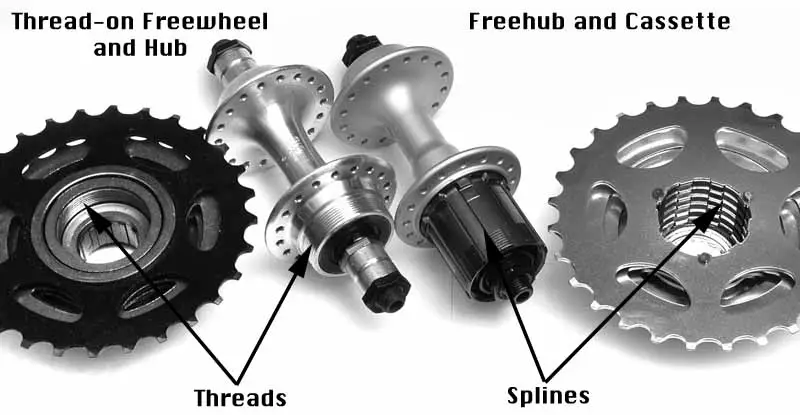
|


|

The terms "freewheel" and "cassette" are often used interchangeably, an error that causes a lot of wasted time and money.
Almost all bikes made through the late 1980s used this system.
Most decent-quality bikes made since the late 1980s have used this greatly improved design.
![]()
![]()

| Traditional Threaded Freewheel |
Traditional Threaded Hub |
Cassette Freehub | Cassette Cluster |
|---|
The cassette Freehub incorporates the ratchet mechanism into the hub body (although the ratchet mechanism is still replaceable). When you wear out the sprockets on a Freehub, you replace the sprockets only, not the ratchet mechanism (which typically lasts much longer than the sprockets).
The sprockets are commonly sold as a set, called a "cassette". The sprockets in a cassette are usually held together by three small bolts or rivets for ease of installation. These bolts or rivets are by no means necessary, they just make it easier to keep the sprockets and spacers in the correct order and position when they are removed from the ratchet body. Individual sprockets are also available.
![]()
![]()
 |
 |
 |
 |
|---|---|---|---|
| Sachs (Sram) Freewheel | Shimano Hyperglide Freewheel | Sun Tour Two-notch Freewheel | Cassette with Lockring |
Freewheels
|
Cassettes
|
![]()

Shimano Cassette Freehub, showing characteristic bulge on the right side of the body.
Not all Freehubs have this bulge, but whenever you see it, you can be sure that it is, in fact, a cassette Freehub.
![]()
![]()